Nuremberg Castle- History, Tour and Tips for Visiting
Purchases made through links earn us a small commission, at no extra cost to you.
Nuremberg, out of all the places we visited during our five weeks in Europe, surprised me the most. It was a place I hadn’t done much research on, for some strange reason. When I decided to stop in Nuremberg, it was mainly because it was a convenient location for making a day trip to Bamberg, which I was dying to see. However, once we arrived I quickly became fixated on Nuremberg Castle, the medieval fortress overlooking the Old Town.
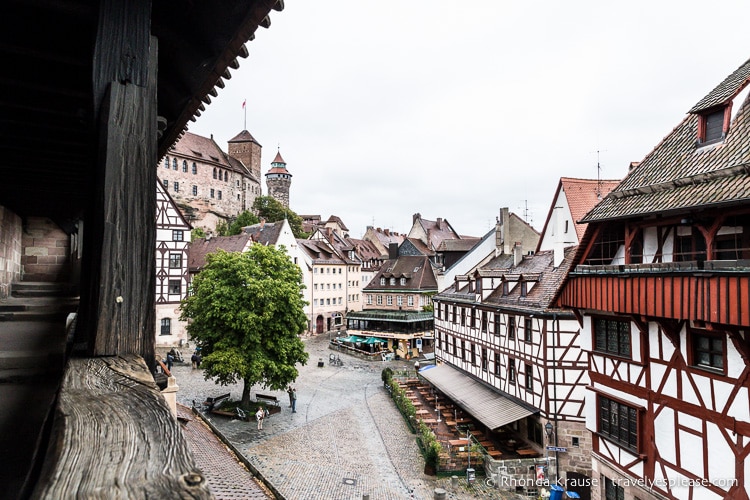
Had I known that Nuremberg had a romantic air about it, with the castle and half-timbered buildings, I would have dedicated an entire day to exploring Nuremberg and not just part of an afternoon. What a mistake that turned out to be!
Walking the empty streets after darkness settled in on the night of our arrival, I felt myself falling in love. That giddy kind of love, where all you want to do is dance when no one is watching.
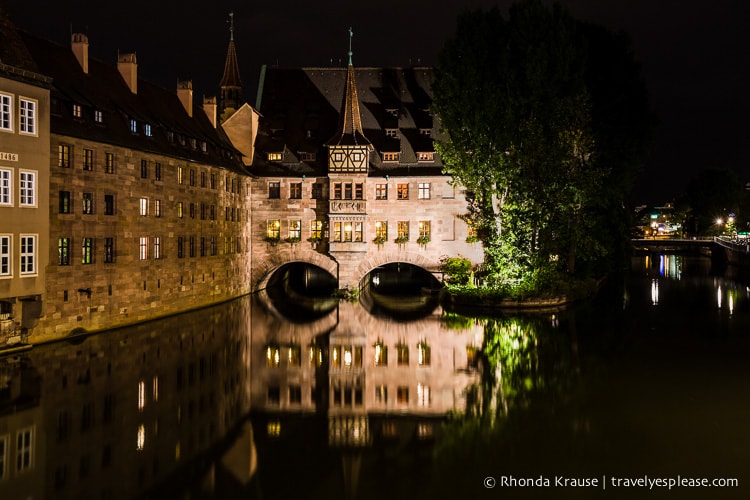
It wasn’t long until I actually was skipping down the cobblestone lanes, humming little songs and feeling totally free. Nuremberg made me act like a fool and I didn’t even care. The only thing I cared about was making it back from Bamberg the next day with enough time to explore Nuremberg Castle, which had been tempting me to visit every time I looked out our hotel window.
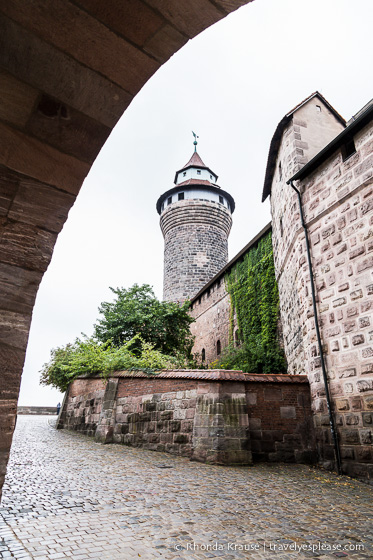
About Nuremberg Castle (Kaiserburg)- History of the Imperial Castle
Nuremberg Castle is one of the most important medieval Imperial palaces. Built on a large sandstone rock, the castle was home to every emperor of the Holy Roman Empire, between 1050 and 1571.
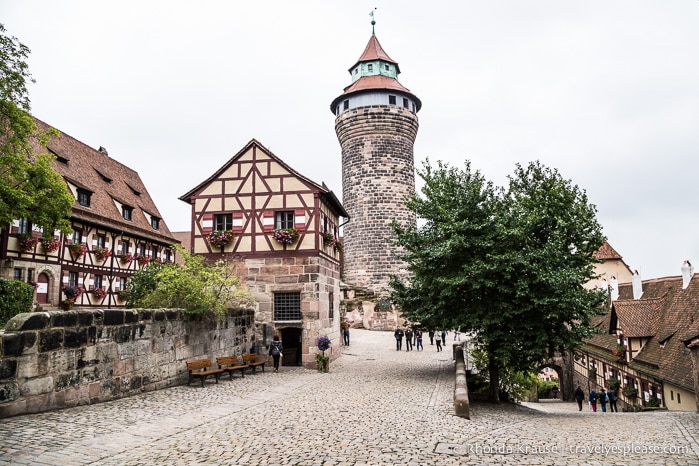
Not only a prestigious residence, the castle was an important part of the empire’s administrative functions. Both the courts and the Imperial Diet (Reichstag) met at Nuremberg Castle. In 1356, Charles IV enacted the “Golden Bull”, a decree which stipulated that newly elected kings of Germany hold their first general assembly at Nuremberg. This helped to make Nuremberg one of the three most important cities in the empire and attracted increased trade and commerce.
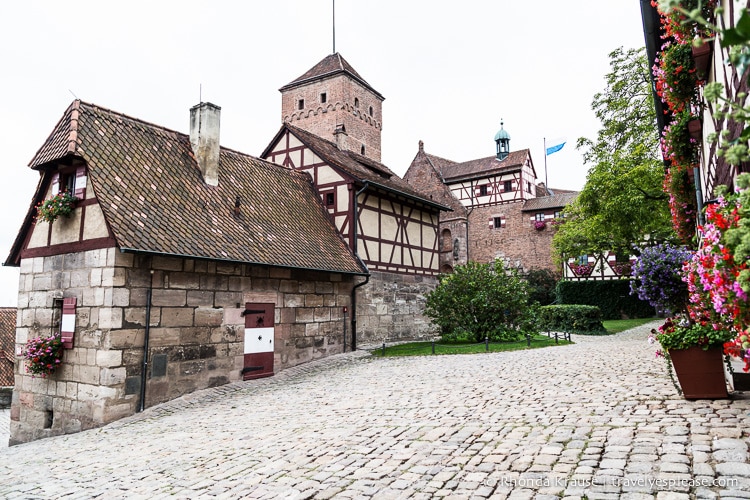
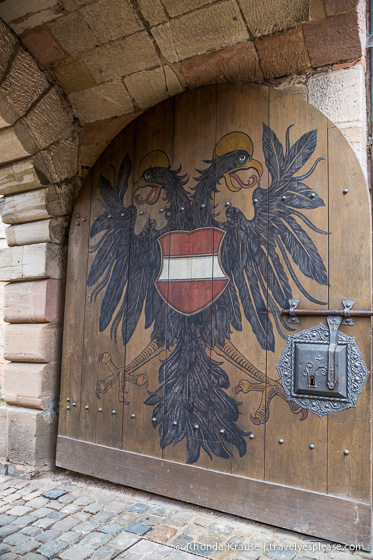
Tour of Nuremberg Castle
There are no organized tours of Nuremberg Castle, so we were free to explore most of it on our own. The only section you need to visit with a staff member is the Deep Well.
To give you an introduction, here’s a look at some of our favourite structures and rooms inside Nuremberg Castle. I hope this guide and photo tour of Nuremberg Castle gives you an idea of what you can expect during a visit to the Imperial Castle of Nuremberg.
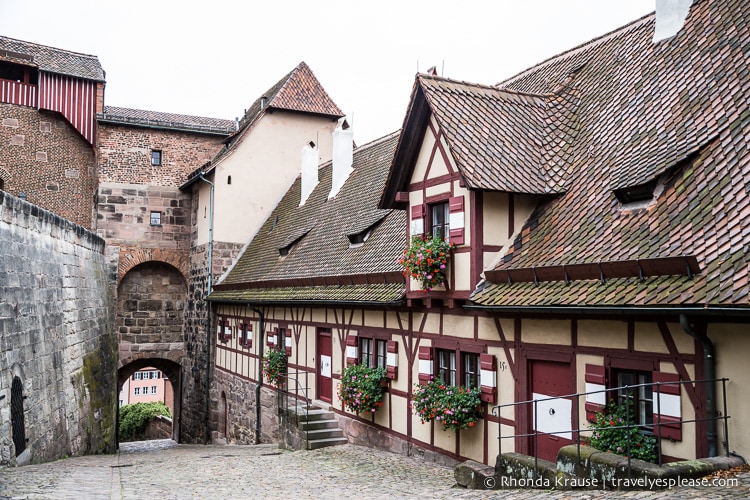
Sinwell Tower
The Sinwell Tower was built late in the 13th century and served defensive, as well as status purposes. The tall, narrow tower is named “sinwell” because that means “extremely round” in Middle High German.
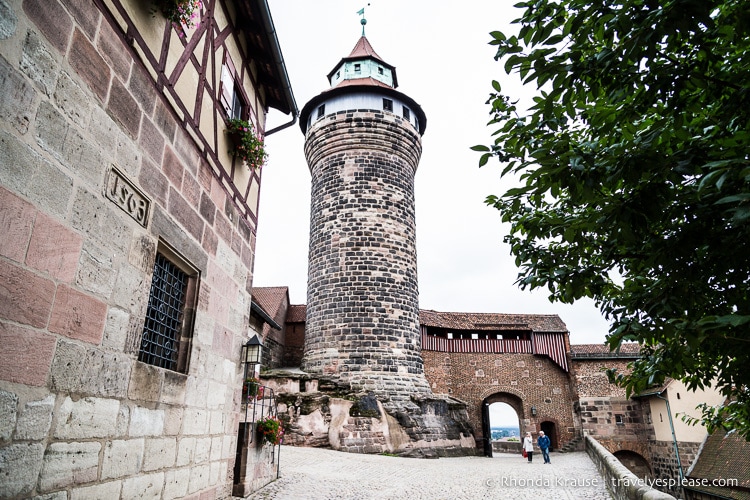
Originally, the entrance to Sinwell Tower was halfway up the tower but today it’s through an extension on the north side. Inside is a wooden spiral staircase, dating from the 18th or 19th century, that leads up to an observation platform.
At the top of the tower you can see old photographs of what Nuremberg looked like after World War II. It wouldn’t be exaggerating to say the castle (and the town) was pretty much completely destroyed. Only the Hasenburg remained untouched. Every other part of the castle was either damaged or completely destroyed. The Germans did a meticulous job of rebuilding Nuremberg Castle back to its historical form.
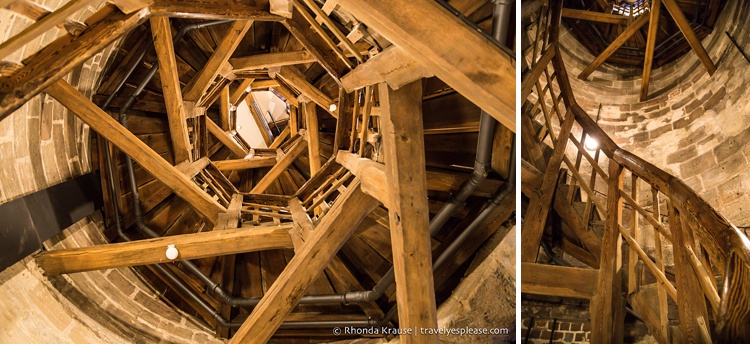
The Deep Well
I would say that the well was the highlight of Nuremberg Castle for us. It is incredibly deep, nearly 50 metres and passing through multiple layers of rock.
To illustrate how deep it was, the guide lowered a candle chandelier down to the bottom of the well. As if that wasn’t enough, she then poured a jug of water down the hole, leaving us waiting to hear it splash to the bottom. It felt like forever until we heard it splash down, but Mike insists it was only about five seconds.
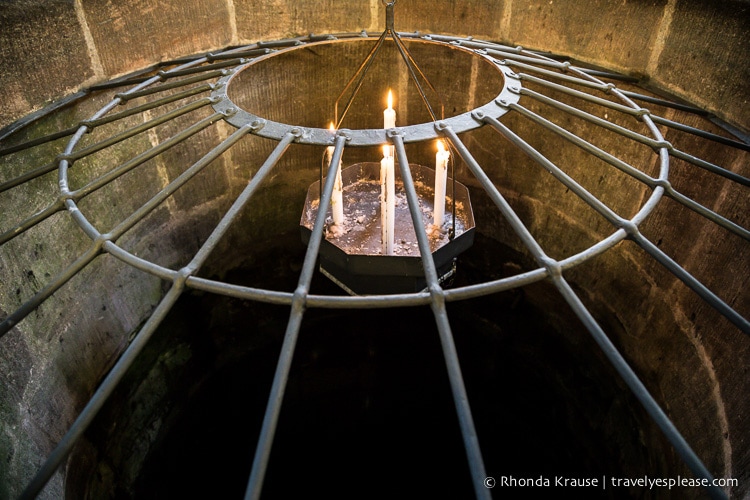
The Deep Well was likely dug at the same time construction began on the Imperial Castle, since it was essential to have a protected water supply. The two-storey house covering the well was added in 1563, according to an inscription on its wall.
The Double Chapel
The Romanesque Imperial Chapel was built around 1200 and is considered by some to be the most important part of the castle. Double chapels are two chapels with an identical floor plan placed one above the other, sometimes linked by an opening in the middle. This chapel had to be skillfully adapted to fit with the contours of the sandstone the castle is built on.
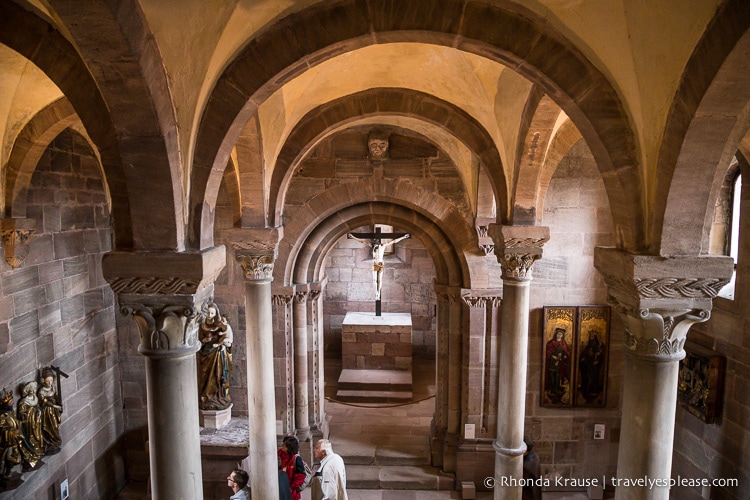
A unique feature of the double chapel is the emperor’s gallery, which enabled the emperor to keep distance from the court. Another focal point of the chapel is the altar. Although the original high altar and its shrines have not been preserved, in their place is a wooden carving of Christ on the cross.
The Imperial Hall
The Imperial Hall at Nuremberg Castle was used for festivities during visits by the Emperor, as well as a dining hall on an everyday basis. It was rebuilt after the Second World War and contains exhibits focusing on the Holy Roman Empire and how it functioned.
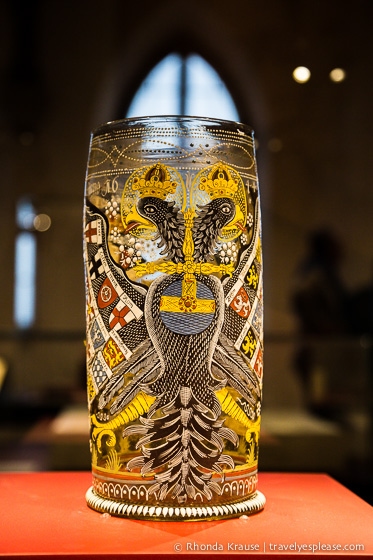
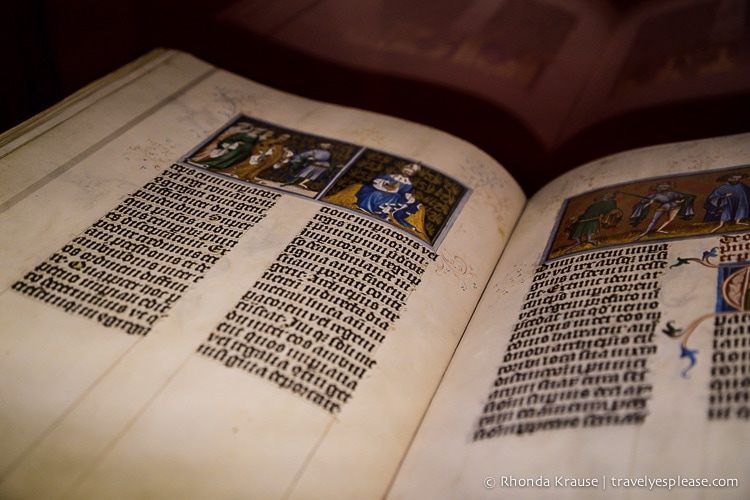
Emperor’s Living Room
The Imperial Hall leads to the smaller rooms of the Imperial Apartment, the most beautiful of which (in my opinion) is the Emperor’s Living Room.
The highlight of the Emperor’s Living Room is the colourful reconstructed ceiling. The four squares in the centre show the double eagle of the Holy Roman Empire of the German Nation with the coats of arms of the main countries.
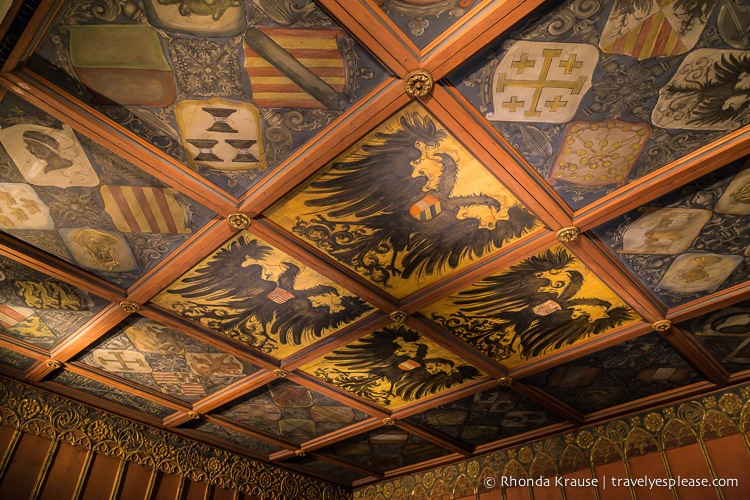
The wall panelling in the Emperor’s Living Room is decorated with golden tracery and was part of the original late 15th century interior.
Corner Chamber
The Corner Chamber contains exhibits centered around the theme of City and Emperor. You can see paintings by famous Nuremberg artists, a wooden model of the city, gifts presented to the Emperor and the Imperial regalia. The eye-catcher though is the Imperial Crown, which hovers over the oldest known topographical model of a German city.
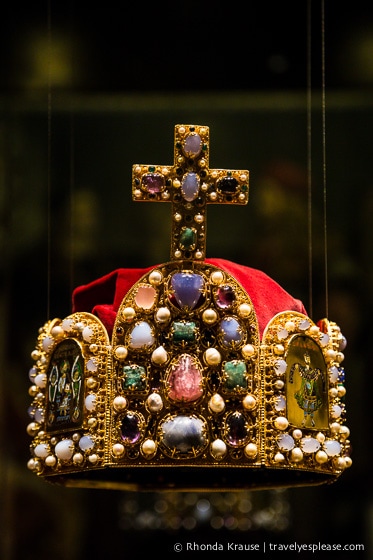
The Imperial Castle Museum
This is a great museum for viewing medieval armour and weaponry. The collection has historical weapons from the 12th to the 19th centuries that illustrate both technological developments and shifts in the cultural importance of weapons.
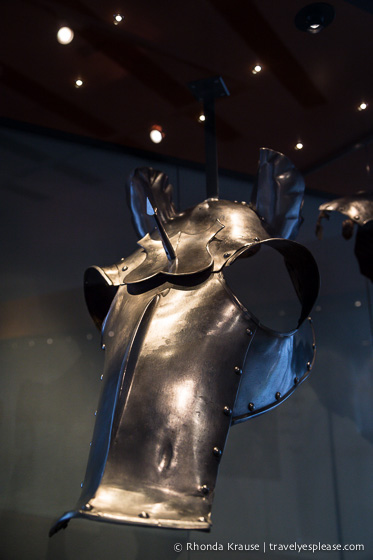
Castle Gardens
Save some time after your visit to the castle to take a walk around the gardens, especially the one on the south side of the great hall. There’s a beautiful circular flower bed neatly surrounded by trees, perfect for relaxing and enjoying the views of the Old Town below.
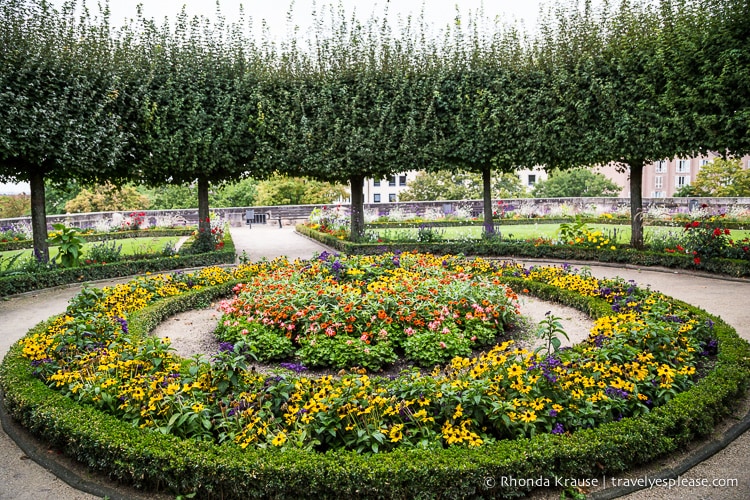
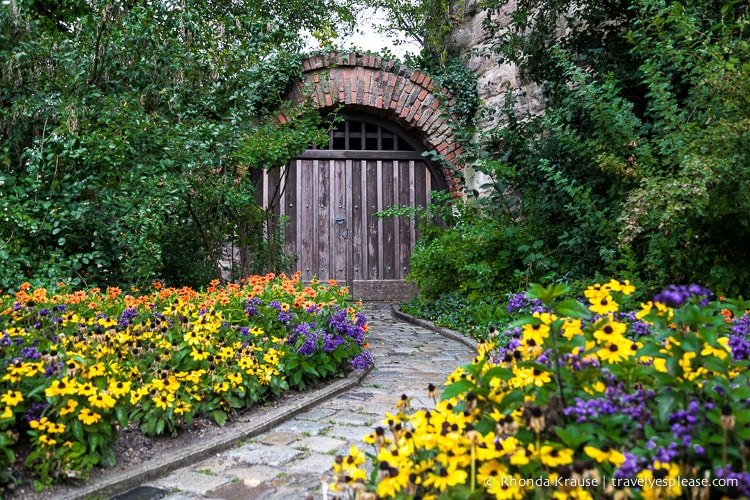
Final Thoughts About Our Tour of Nuremberg Castle
Mike and I both really loved Nuremberg Castle and it was one of our favourite places to visit in Bavaria. The history was intriguing and there were many beautiful objects on display in the different rooms. The Deep Well was definitely a point of conversation afterwards, so don’t miss this demonstration!
As interesting as Nuremberg Castle was, my favourite thing about it was how pretty it was. There were so many little touches- red window shutters, flower boxes, cobblestone paths, gardens- that made it feel more like a small medieval village rather than an imposing castle. We would definitely recommend a visit to Nuremberg Castle!
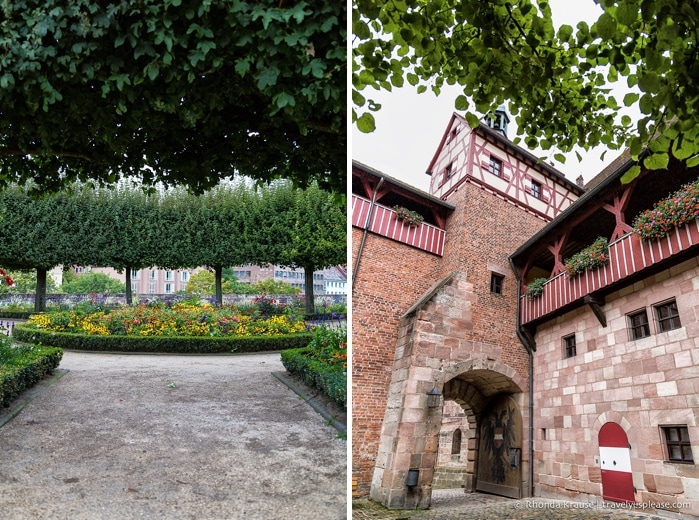
Tips for Visiting Nuremberg Castle
Opening Hours: Nuremberg Castle is open daily from 9:00 am- 6:00 pm (April 1 to October 6) and 10:00 am- 4:00 pm (October 7 to March 31). It’s closed during some holidays including New Year’s Day, Shrove Tuesday, and December 24, 25 and 31. Confirm current opening hours here.
- Last admission is 60 minutes before closing.
- The Nuremberg Castle gardens are open April 15- October 31 from 8:00 am until nightfall (8:00 pm at the latest). The gardens are closed November to April 14.
Entrance Fee: Tickets to Nuremberg Castle costs €7.00 This includes the Palas with double chapel and the Imperial Castle Museum. The Imperial Palace combination ticket costs €9.00 and includes the Palas with double chapel, Deep Well, Sinwell Tower, and museum. Children under 18 are admitted free of charge. Confirm current prices here.
- The Deep Well can only be visited with a guided tour and requires a separate ticket if you don’t buy the combination ticket. Tickets for the well and Sinwell Tower cost €4.00, so it’s most economical to buy the combination ticket if you plan on visiting the well as part of your Nuremberg Castle tour. Tours of the Deep Well run every half hour (check at the office for specific times).
Audio Guide: Audio guides can be rented for an additional fee and are available in German, English, French, Italian, Spanish, Russian and Czech.
Accessibility: The upper floor of the Palas and the Double Chapel are unfortunately accessible only by stairs.
Parking: There is no parking at the castle so you’ll have to use the public lots in the city.
Information was updated January 2025, but can change without notice. Please confirm directly with service providers.
Accommodations in Nuremberg
For your convenience, here is a list of hotels in Nuremberg. Please consider booking your Nuremberg accommodations through the included link. It costs nothing extra and helps support this website. Thank you!
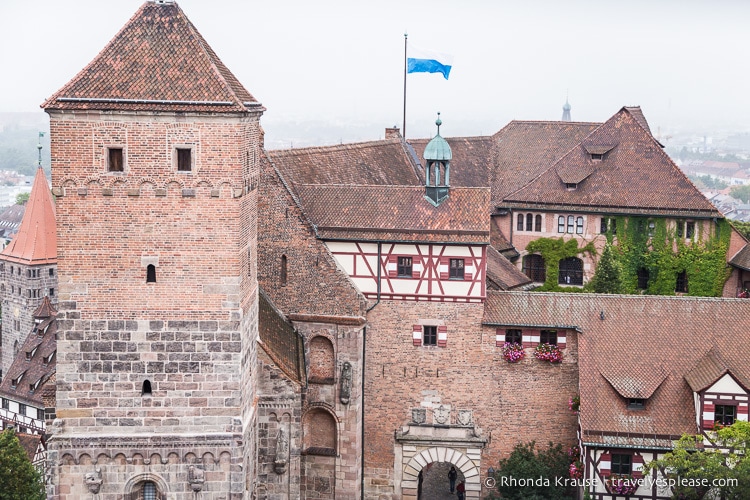
More Germany Destinations and Travel Guides
- Neuschwanstein Castle- The Theatrical Creation of “Mad” King Ludwig
- Hohenschwangau Castle- Childhood Home of King Ludwig II of Bavaria
- The Romantic Ruins of Heidelberg Castle
- Rothenburg ob der Tauber- An Enchanting Medieval Town
